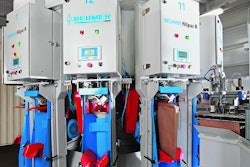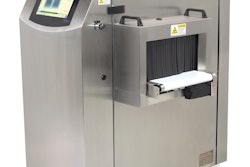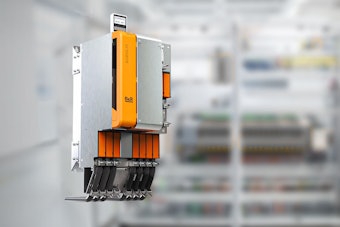The market for cosmeceuticals, nutraceuticals, and aromatherapy is rapidly expanding as the ability to deliver these items using transdermal patches is further refined. From patches for anti-aging products to essential oils for homeopathic remedies to vitamins and nutrients for soldiers in the battlefield, transdermal patch technology has blossomed since the introduction of the first nicotine patches decades ago.
Worldwide cosmeceutical sales alone, according to a research report from RNCOS, an information and analysis company, describes a market worth $27.2 billion in 2010, with expected growth to $38.4 billion (9% Compound Annual Growth Rate) by 2014.
The evolution of transdermal delivery
At the time of their introduction, transdermal drug delivery systems generated tremendous excitement over their potential for:
• Avoidance of immediate elimination of a drug by the liver
• Avoidance of the gastrointestinal tract
• Improved patient compliance
• Controlled delivery of drugs with short half-lives
However, it soon became clear there were drawbacks:
• Skin irritation from a “patch”
• Limits on dosage
• Lag time while the drug was delivered through the skin
• Variation in absorption rate based on skin type, patient age, etc.
• Limits on the kinds of drugs that could be absorbed through the skin
Candidate drugs for transdermal delivery were pretty much limited to nitroglycerin, scopolamine, clonidine, estrogen, testosterone, nicotine, and fentanyl. The skin turns out to be a rather formidable barrier with poor penetration by most compounds with large molecular weights, like proteins and peptides. Drugs with high lipid solubility pass easily, but drugs with low lipid solubility need a membrane carrier or active transport system.
New developments for increasing skin penetration include solid dispersions, microemulsions, self-emulsifying systems, complexation, liposomes, and nanostructured particles using molecular modeling. Along with changes in transdermal drug delivery technology came an increasing use of transdermals in over–the-counter applications.
Cosmeceuticals, nutraceuticals, and aromatherapy
While drug delivery development languished, transdermal delivery became more popular in areas where design and manufacturing complexity and regulatory monitoring were less intense: cosmeceuticals, nutraceuticals, and aromatherapy.
Cosmeceuticals
What are cosmeceuticals? The definition has been blurred over the years and confused, since any company can call almost any cosmetic product a cosmeceutical. Most often, a cosmeceutical delivers some active ingredients through the skin, while cosmetics are more “topical” in nature. Some industry experts would like to define them as products that don’t require a prescription, but are only available from professionals such as doctors, aestheticians, healthcare professionals, and technicians.
Today’s most popular cosmeceuticals include:
• Teeth whiteners
• Lip protection
• Skincare, especially anti-aging products
• Haircare
• Scarless wound healing, or anti-scarring treatments
Nutraceuticals
Nutraceuticals can include everything from nutritional supplements to complete emergency nutritional delivery systems for those without access to meals for a period of time, for example soldiers in the field, firefighters, miners, and astronauts.
Dietary and nutritional supplements benefit from transdermal delivery:
• Instant and continuous delivery to the bloodstream
• Time-release delivery
• Delivery of the optimal dosage strength
• No breakdown in the harsh, acidic digestive system
• Convenient dosage
Aromatherapy
Aromatherapy has become increasingly popular for:
• Relaxation and stress relief
• Increased circulation to warm muscles
• Mood enhancements
The use of a transdermal delivery patch can speed delivery of essential oils, allow for greater effectiveness, as in applications where magnesium is delivered using a thermal patch, and deliver therapeutic benefits in conjunction with other homeopathic treatments.
Elements in patch designs
Transdermal patch designs contain a liner, formula/drug, adhesive, membrane, and backing:
• Liner—protects the patch during storage and is removed prior to use
• Formula—supplement, oil, or medication in direct contact with the liner
• Adhesive—keeps the components of the patch together, keeps the patch adhered to the skin, and in new designs, may include the formula/drug
• Membrane—in some designs, it controls the release of the formula/drug from the reservoir
• Backing—protects the patch from the environment
Types of transdermal patch designs
There are several types of transdermal patch designs: reservoir, matrix, drug-in-adhesive (DIA), and multi-laminate DIA. Patch design must consider the properties of the drug, cosmeceutical, nutraceutical, or aromatherapy, the desired delivery profile, and the target patient group.
The reservoir-type patch contains the drug solution in a liquid reservoir compartment, separated from a release liner by a semi-permeable membrane and an adhesive. The membrane controls the timed release of the liquid drug. Closely related, the matrix design has a drug that is a semi-solid. In the matrix design, there is no membrane layer.
The latest in transdermal delivery design is the drug-in-adhesive or DIA. DIA systems add the drug directly to the adhesive that contacts the skin. DIA designs can be single-layer or multi-laminate designs that may add a membrane between two distinct DIA layers, or multiple DIA layers under a single backing.
The basic functional requirements for any transdermal delivery system include adhesion to the skin, both the initial tack and the duration, delivery of the drug, and eventual removal from the skin without causing unnecessary irritation. A transdermal patch design will meet these basic functional requirements using a custom combination of components.
The role of adhesives in transdermal patches
Selection of the correct adhesive for a transdermal patch is critical. It affects both drug delivery and the adhesion of the patch to the skin for the required time period, and ultimately, it’s easy and pain-free removal when the therapy is completed. The right adhesive will work with the formula/drug, the patient’s skin, and body movements that occur during normal wear. Custom formulations are often required to meet the specifics for a transdermal patch.
Acrylic, acrylic-rubber hybrids, polyisobutylene, and styrenic rubber solutions are used for their good adhesion and ability to control the rate at which the formula/drug enters the body.
New polymer adhesives are also being modified to improve solubility and drug diffusion while keeping favorable adhesive and cohesive properties. These polymers include hydrophilic pressure-sensitive adhesives (PSAs) that can be applied wet and still provide good adhesion. Other types of polymer adhesives include synthetic polymers, such as poly acrylic acid (PAA) and poly methyl acrylate derivatives, as well as hyaluronic acid and chitosan. Copolymerization of different polymers is often used to achieve the correct balance of drug delivery, adhesion, and release properties.
Converter assistance
Backing film, release liner, adhesive, and reservoir material all protect and deliver the transdermal drug formulation. Choosing the right adhesives and materials, and converting them into the appropriate patch design requires the assistance of an experienced medical converter, whether your end product is medical, cosmeceutical, nutraceutical, or aromatherapy.
An experienced medical converter takes an advanced assembly approach, helping with everything from initial patch design to selection of the appropriate adhesive formulation, materials for the backing and release liner, laminating the materials and adhesives together, selecting the appropriate cutting technique, and assembling and kitting the final transdermal patch product.
The choice of backing materials influences the delivery profile, adhesion, and wearability. The backing might include the lamination of several layers of materials such as polyethylene and ethyl vinyl acetate. The backing protects and contains the drug/formulation, prevents the unwanted absorption of the drug before application, and controls the evaporation of moisture through the patch. The release liner must also be carefully selected to protect the adhesive, which may contain the formulation until application without interacting with other components in the design. The medical converter can also recommend the best packaging for the transdermal patch for shipment and storage until use.
A medical converter can provide slitting, layering, laminating, precision die-cutting, and packaging of the finished product. The converting process might entail clean room production; for example, Fabrico offers three Class 10,000 clean rooms in its facilities, as well as ISO 13485 certification.
Medical contract manufacturers and OEMs working with transdermal technology for cosmeceuticals, nutraceuticals, and aromatherapy are looking for medical converters to provide:
• Precision die-cutting, multi-layer laminating, and slitting to tight tolerances
• Clean room capabilities, including converting and packaging
• Access to medical-grade adhesives and custom formulations
• Testing capabilities
An experienced medical converter can select from servo driven rotary die-cutting, CNC die-cutting, laser die-cutting, and water jet cutting to meet the complex specifications of medical components. For example, a servo-driven rotary die-cutter can maintain tight tolerances ranging from 0.015” to +/-0.005” at speeds up to 500 ft/min, and is ideal for the complex, multilayer die-cutting, and lamination that a transdermal patch might require.
For complex foam tape die-cutting, water jet technology provides clean edges with no distortion. Laser die-cutting, kiss-cutting, slitting, and laminating can also be used in converting for medical and cosmeceutical applications.
A converter with a fully equipped test laboratory can ensure that customer materials meet designed-in specifications before they move to the factory floor, often eliminating the need to test materials at the customer’s facility. A complete test lab offers:
• Accurate and precise part dimension measurement and verification
• Adhesive/release liner testing to determine converting properties and high speed application characteristics
• Material strength measurement to ensure that material meets application requirements
• Static shear testing to measure the cohesive strength of the adhesive to withstand a fixed load over time
• Material weight measurement to determine adhesive coating weight
• Microscopic imaging to determine differences between adhesive and material over time.
Summary
Working with start-ups, contract design and manufacturing companies, as well as OEMs, an experienced medical converter can help develop and manufacture transdermal delivery devices for cosmeceuticals, nutraceuticals, and aromatherapy in a timely and profitable manner. Utilizing their combined knowledge of materials, adhesives, converting techniques, and packaging, an experienced converter can ensure that transdermal delivery devices are manufactured correctly, efficiently, and in accordance with industry and government standards.
--Article provided by Craig McClenachan, sales and marketing manager at Fabrico, a company involved in designing, prototyping, and manufacturing engineered flexible materials for medical and other applications.























